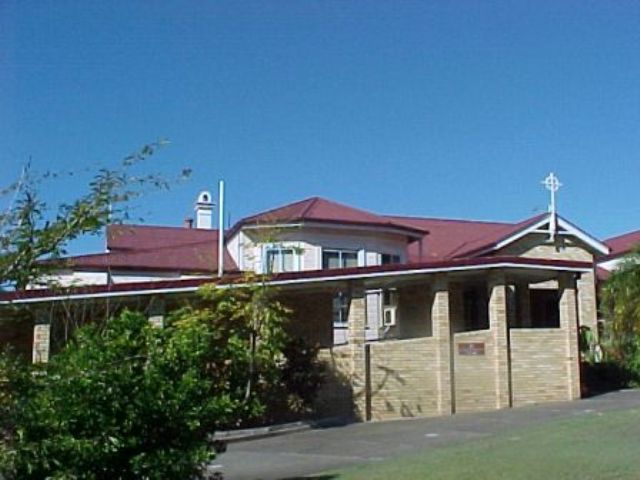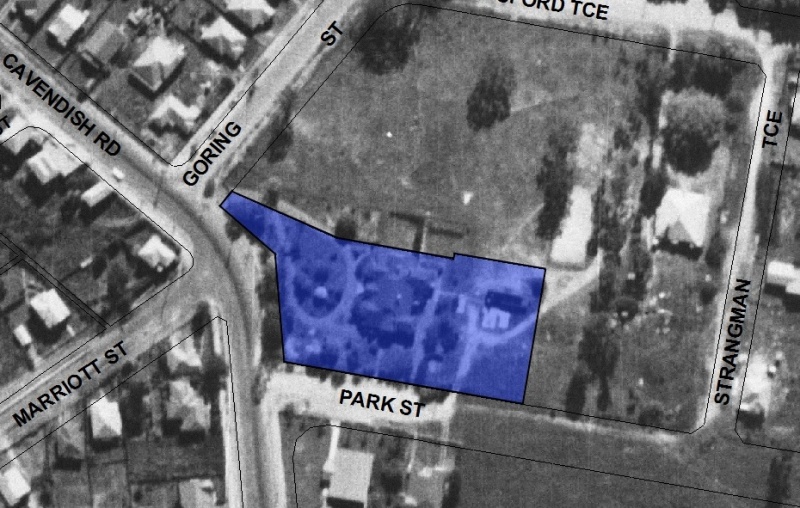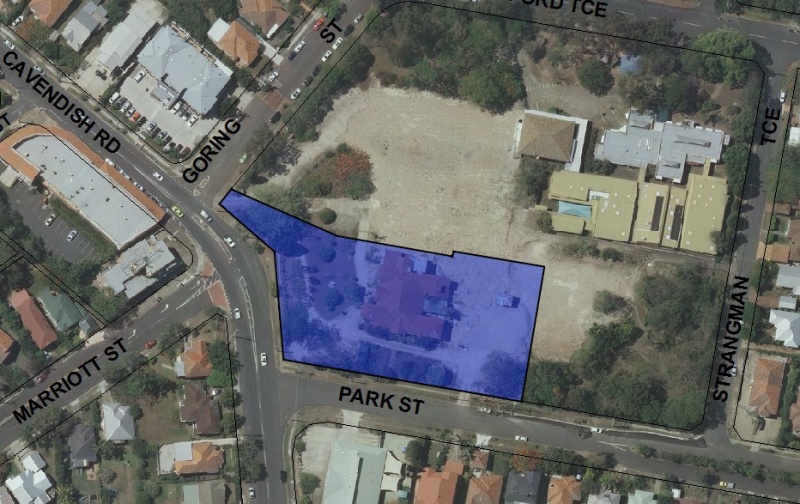Addresses
Type of place
House
Period
Federation 1890-1914
Style
Queen Anne
Addresses
Type of place
House
Period
Federation 1890-1914
Style
Queen Anne
A substantial single storey timber house, constructed in 1890 by Mr Thomas Mulhall King to a design by John Jacob Cohen, it was utilised as a hospital in World War II, then in 1946 acquired by the Catholic Church and used as the Xavier Hospital for disabled children from 1949 to 1994. In 2007 the house was adapted as community facilities as part of a retirement village development constructed in the grounds of the former hospital.
Also known as
Xavier Hospital
Lot plan
L4_SP263424; L1_SP228399; L5_SP263424
Key dates
Local Heritage Place Since —
Date of Citation —
Construction
Roof: Corrugated iron;Walls: Timber
People/associations
John Jacob Cohen (Architect)Criterion for listing
(A) Historical; (B) Rarity; (D) Representative; (E) Aesthetic; (G) Social; (H) Historical associationInteractive mapping
Also known as
Xavier Hospital
Lot plan
L4_SP263424; L1_SP228399; L5_SP263424
Key dates
Local Heritage Place Since —
Date of Citation —
Construction
Roof: Corrugated iron;Walls: Timber
People/associations
John Jacob Cohen (Architect)Criterion for listing
(A) Historical; (B) Rarity; (D) Representative; (E) Aesthetic; (G) Social; (H) Historical associationInteractive mapping
History
The house was built by Thomas Mulhall King in 1890 to a design by John Jacob Cohen, architect. From Thomas Mulhall King worked for the Collector of Customs. In 1882, he became the Collector of Customs, Chief Inspector of Distilleries and a member of the Immigration Board. It was at this time that he built his property at Coorparoo. In 1893 he became Under Secretary to the Treasury, and in 1902 the Auditor General, a position he held until 1907. In 1903 he was decorated with the Imperial Service Order. Between 1907 11 he was Deputy Commissioner for Railways. On his death in 1921 his property was lived in by Mr R M King, Minister for Public Instruction.
In 1925 the property was sold to Isiah and Edith Lahey a well-known family of timber merchants. During World War II (1943) the house and grounds were uses as the 10th Camp Hospital in association with 101st Australian Convalescent Depot, which was based in the nearby Loreto Convent. In 1946 the Xavier Society purchased Erica from Mrs Isaiah Lahey for the establishment of a home for Cripple children, to mark the Sacerdotal Jubilee of Archbishop Duhig. . The property comprised the house and 4 ½ acres of land. It was opened on 15 May 1949. The home was run by the Franciscan Missionaries of Mary. The hospital expanded to fill much of the grounds of the house. The hospital use ceased in 1994.
In 2007 the property was purchased by the Village Retirement Group. The hospital buildings were demolished, and the house was restored and adapted for community facilities to serve the adjoining retirement housing.
John Jacob Cohen (1859-1939) graduated from the University of Sydney with a Bachelor of Arts in 1879, with a first class honours in mathematics, and was articled to a consulting engineer. He subsequently studied architecture at night school. He practices as an architect and engineer firstly in Mackay 1882, before moving back to Brisbane in 1885 where he had a brief partnership with F F Holmes. In May 1886 he practices on his own and picked up a range of mostly commercial commissions, including a number of warehouses. He designed Erica in 1890, one of his last commissions in Brisbane. In 1892 he moved to Sydney, where he studied law, and subsequently became a member of the NSW legislative assembly, and then a District Court Judge.
Description
The house was originally set in grounds of 5 acres. It is a substantial one storey dwelling, constructed of timber and weatherboards under a corrugated iron roof. It is symmetrical set under a substantial half-hipped gable roof with gables projecting to either side. There are two projecting canted bays to the front with a centrally placed porch. There are two hipped roofed projections to the rear, between which is a modern flat roof extension. The house was substantially restored in 2011, and painted externally with historically derived paint scheme.
Statement of significance
Relevant assessment criteria
This is a place of local heritage significance and meets one or more of the local heritage criteria under the Heritage planning scheme policy of the Brisbane City Plan 2014. It is significant because:
References
-
The Queenslander 14 April 1932, p 34
-
The Brisbane Courier 2 December 1921 p 11
-
The Telegraph 5 November 1946 p 2
-
Cairns Post 29 April 1953 p 6
-
Harrison Construction Pty Ltd – Erica Restoration 2015
-
Queensland Architects of the 19th Century, Watson & MacKay, 1994
Citation prepared by — Brisbane City Council (page revised September 2020)



